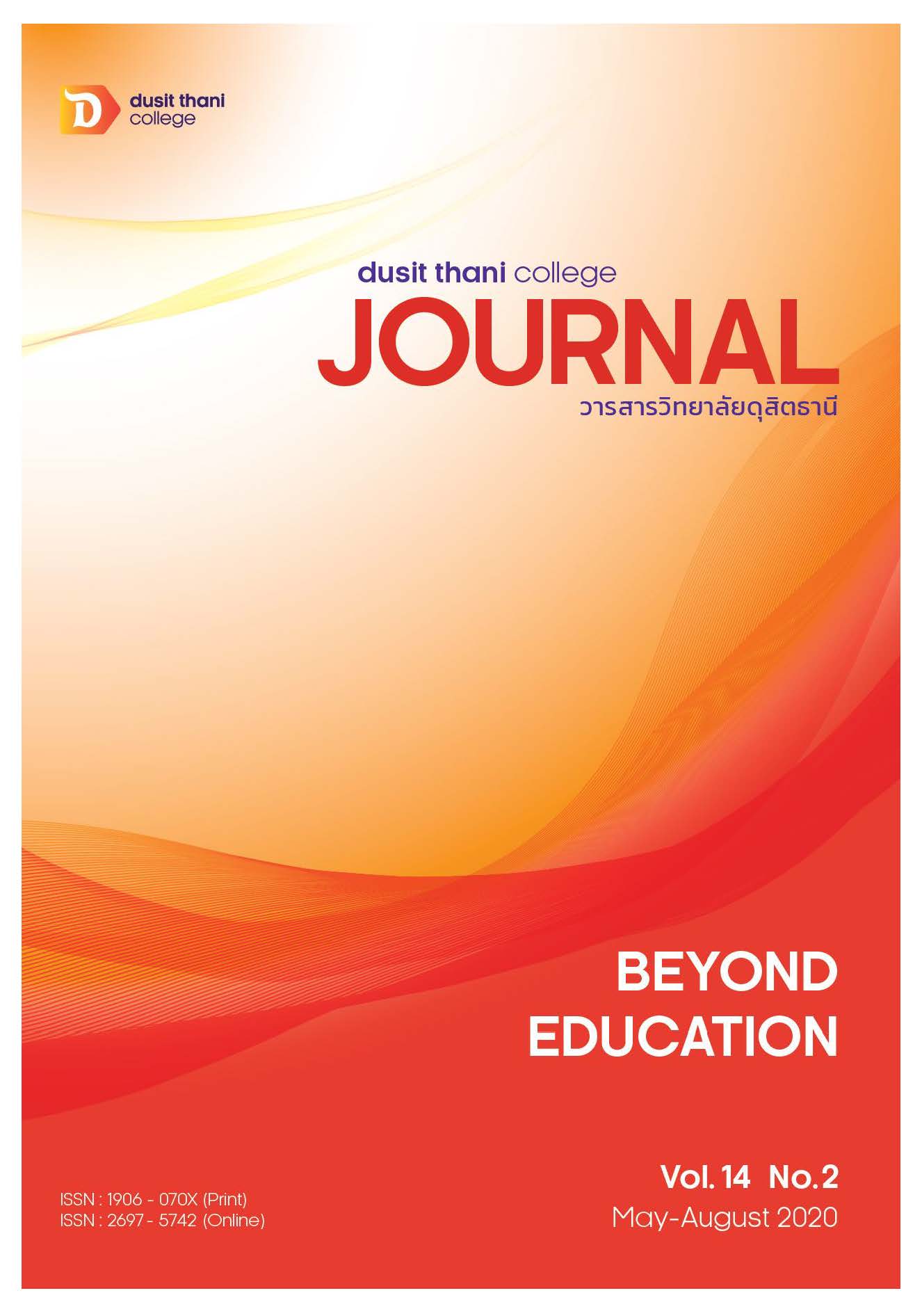A Conceptual Model: An Application of Universal Design in Tourism Industry for Senior and Disabled Tourists - A Case Study of North to Central Pattaya Beach Road Area
Main Article Content
Abstract
This research was aimed to develop a Conceptual Model of an Application of Universal Design in Tourism Industry for Senior and Disabled Tourists in the area of North to Central Pattaya Beach Road Area by using 7 principles of Universal Design. A research was conducted by a qualitative method by using observation and interviewing with both government organization, public organisation and other supportive organisation to obtain useful information. Research results found that the interviewees believe that the existing facilities and infrastructures in the area of research are well equipped and efficient in serving the needs of seniors and disabled people. The main aspect that should be developed is a perception and awareness of people towards the right and needs of senior and disabled people. Therefore, the researcher had come up with a conceptual model of an application of Universal Design in the tourism industry for senior and disabled tourists in the area of the north to central Pattaya beach road area. The conceptual model can be divided into 4 related aspects which are 1) Facilities and Infrastructures 2) Qualified Supplier 3) Knowledge and Awareness and lastly 4) Marketing and Promotion. These aspects are essential elements that will help in developing an awareness and also create advantages to all stakeholders.
Article Details
Article Screening Policy
- All research and academic articles to be published must be considered and screened by three peer reviews in the relevant field / article.
- All articles, texts, illustrations and tables published in the journal are the personal opinions of the authors. Editors don't always have to agree. And no responsibility whatsoever is the sole responsibility of the author.
- The articles to be published must never be published. Where did you first publish? And not in the consideration of other journals If the audit found that there has been a duplicate publication It is the sole responsibility of the author.
- Any article that the reader sees as being plagiarized or impersonated without reference. Or mislead the work of the author Please let the journal editor know it will be your greatest blessing.
References
Centre for Excellence in Universal Design. (2014). Building for Everyone: A Universal Design Approach. 6.
Department of Older Persons, M. o. S. D. a. H. S. (2003). The Act on the Elderly, B.E. 2546
(2003 A.D.). 4.
Esichaikul, R. (2012). Travel motivations, behavior and requirements of European senior tourists to Thailand. PASOS. Revista de Turismo y Patrimonio Cultural, 10(2).
Jang, S. S., & Wu, C.-M. E. (2006). Seniors’ travel motivation and the influential factors:
An examination of Taiwanese seniors. Tourism management, 27(2), 306-316.
Le Serre, D. (2008). Who is the senior consumer for the tourism industry. Amfiteatru Economic, 10(special 2), 195-206.
Ministry of Tourism and Sports. (2015). Thailand Tourism Strategy 2015 - 2017. 16.
Ministry of Tourism and Sports. (2016). Domestic Tourism Statistics Q1-Q4(Classify by region and province).
Molly Follette Story, J. L. M., Ronald L. Mace. (1998). THE UNIVERSAL DESIGN FILE:
Designing for People of All Ages and Abilities.
National Statistical Office, M. o. I. a. C. T. (2014). The 2014 Survey of the Older Persons in Thailand. 1.
National Reform Council. (2015). Agenda No. 30th: A system reformation for Ageing Society. 9.
Ostroff, E. (2011). Universal design: an evolving paradigm. Universal design handbook, 2, 34-42.
United Nations. (2014). World Population Ageing, 2013: United Nations Publications.
United Nations Economic and Social Commission for Asia and the Pacific (UNESCAP). (2009). Takayama Declaration on the Development of Communities-for-All in Asia and the Pacific Appendix.
World Tourism Organization, W. (2016). World Tourism Day 2016 - “Tourism for All - promoting universal accessibility”.


